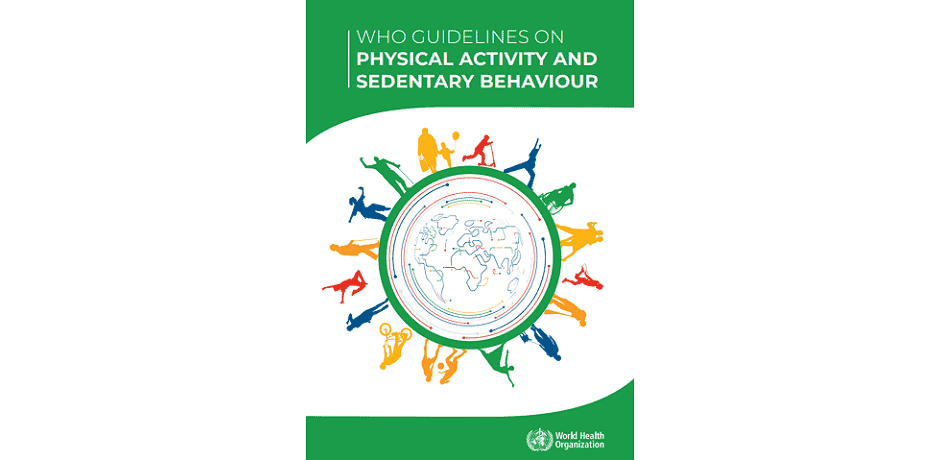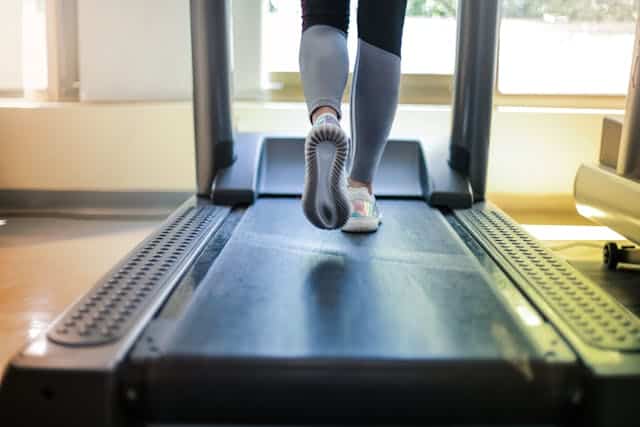
How do office spatial environments influence sitting time and face-to-face interactions?
November 18, 2020
Joint associations of accelerometer-measured physical activity and sedentary time with all-cause mortality: a harmonised meta-analysis in more than 44 000 middle-aged and older individuals
December 2, 2020New WHO 2020 guidelines on physical activity and sedentary behaviour have just been launched. These guidelines update the previous WHO recommendations released in 2010 and provide evidence-based recommendations for children, adolescents, adults and older adults on the amount of physical activity required for optimal health outcomes. For the first time, the guidelines include recommendations on reducing sedentary behaviour and address specific subpopulations, such as pregnant and postpartum women, and people living with chronic conditions or disability. The article describing the new guidelines is titled “World Health Organization 2020 guidelines on physical activity and sedentary behaviour” and was just published in the A summary of the paper and citation details are below. The full paper is available here.
The links to the WHO documents, papers published in scientific journals and social media resources in relation to the new guidelines can be found at the bottom of this post.
ABSTRACT
Objectives To describe new WHO 2020 guidelines on physical activity and sedentary behaviour.
Methods The guidelines were developed in accordance with WHO protocols. An expert Guideline Development Group reviewed evidence to assess associations between physical activity and sedentary behaviour for an agreed set of health outcomes and population groups. The assessment used and systematically updated recent relevant systematic reviews; new primary reviews addressed additional health outcomes or subpopulations.
Results The new guidelines address children, adolescents, adults, older adults and include new specific recommendations for pregnant and postpartum women and people living with chronic conditions or disability. All adults should undertake 150–300 min of moderate-intensity, or 75–150 min of vigorous-intensity physical activity, or some equivalent combination of moderate-intensity and vigorous-intensity aerobic physical activity, per week. Among children and adolescents, an average of 60 min/day of moderate-to-vigorous intensity aerobic physical activity across the week provides health benefits. The guidelines recommend regular muscle-strengthening activity for all age groups. Additionally, reducing sedentary behaviours is recommended across all age groups and abilities, although evidence was insufficient to quantify a sedentary behaviour threshold.
Conclusion These 2020 WHO guidelines update previous WHO recommendations released in 2010. They reaffirm messages that some physical activity is better than none, that more physical activity is better for optimal health outcomes and provide a new recommendation on reducing sedentary behaviours. These guidelines highlight the importance of regularly undertaking both aerobic and muscle strengthening activities and for the first time, there are specific recommendations for specific populations including for pregnant and postpartum women and people living with chronic conditions or disability. These guidelines should be used to inform national health policies aligned with the WHO Global Action Plan on Physical Activity 2018–2030 and to strengthen surveillance systems that track progress towards national and global targets.
The article is published here: https://bjsm.bmj.com/content/54/24/1451
Citation
, et al. World Health Organization 2020 guidelines on physical activity and sedentary behaviour.
WHO documents
- The full WHO Guidelines on physical activity and sedentary behaviour.Link: https://apps.who.int/iris/handle/10665/336656
- Web annex: Evidence profiles, detailing the evidence behind the recommendations. Link: https://apps.who.int/iris/handle/10665/336657
- WHO Guidelines on physical activity and sedentary behaviour: at a glance – provides a summary of the recommendations and is available in all 6 UN languages. Link: https://apps.who.int/iris/handle/10665/337001
- WHO Press Release. Link: https://www.who.int/news/item/25-11-2020-every-move-counts-towards-better-health-says-who
Science behind the guidelines
- Special issue of the British Journal of Sports Medicine. Link: https://bjsm.bmj.com/content/54/24
- International Journal of Behavioural Nutrition and Physical Activity. Link: https://ijbnpa.biomedcentral.com/articles
- Journal of Physical Activity and Health. Link: https://doi.org/10.1123/jpah.2020-0323
- A BJSM podcast with Fiona Bull and Juana Willumsen
- An International Society For Physical Activity And Health Webinar on The Science Behind the WHO Guidelines on Physical Activity & Sedentary Behaviour. Thursday 3rd December 2020, 20:00 – 21:30 GMT. Registration open
- A commentary on guidelines was also published today in the Lancet. Link: https://www.thelancet.com/journals/lancet/article/PIIS0140-6736(20)32229-7/fulltext?rss=yes
Social media resources
- The WHO Every Move Counts video. Link: https://youtu.be/jY7YvglA92s
- Short video clips that can be used on various social media channels/platforms. Link: https://trello.com/b/QsDqw1xl/who-every-move-counts-campaign




